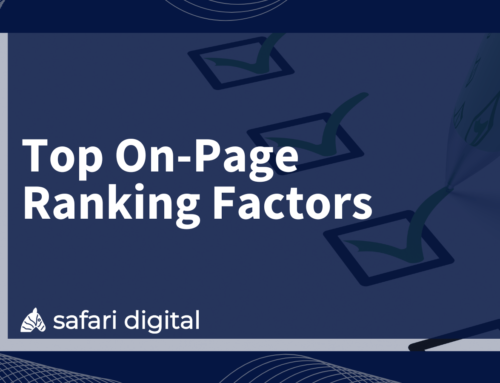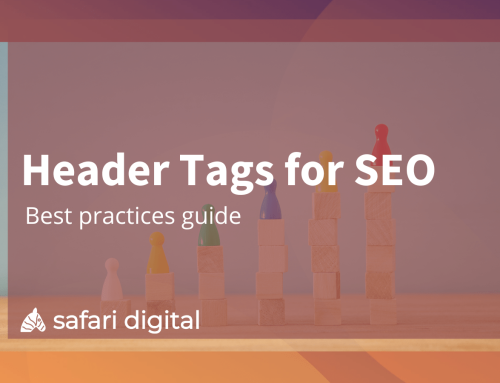
Proven methods to achieving the ranking position above #1 for your search terms with Google’s featured snippet.
The top three ranking positions of any given search query receive the most traffic and have therefore always been the most desirable. In today’s saturated market, finding your way to the very top of search engine results can seem a terrifying feat.
As of 2019, position #1 in Google enjoys a 34.36% click through rate (CTR). Users rarely make it past the first page of Google when making a search query, and often it can take months or even years to achieve a high ranking on a competitive search term.
However, what many people don’t realise is that Google has created an unprecedented opportunity for websites to outrank position #1. In 2016, Google released an update in which “featured snippet” were displayed for search queries or questions – an opportunity for searchers to get direct answers to their queries.
Featured snippet are the first piece of information users come across when searching a word or phrase. They are taken directly from a reputable source (a website with valuable and informative content on the subject) and the answer is displayed in a little drop-down box, with a link to the featured website.
What is a Featured Snippet?
For Google, a featured snippet is an opportunity to provide users with direct and concise answers to their question. For a business or a website, a featured snippet is an opportunity to outrank competitors with valuable content and clever on-page optimisation.
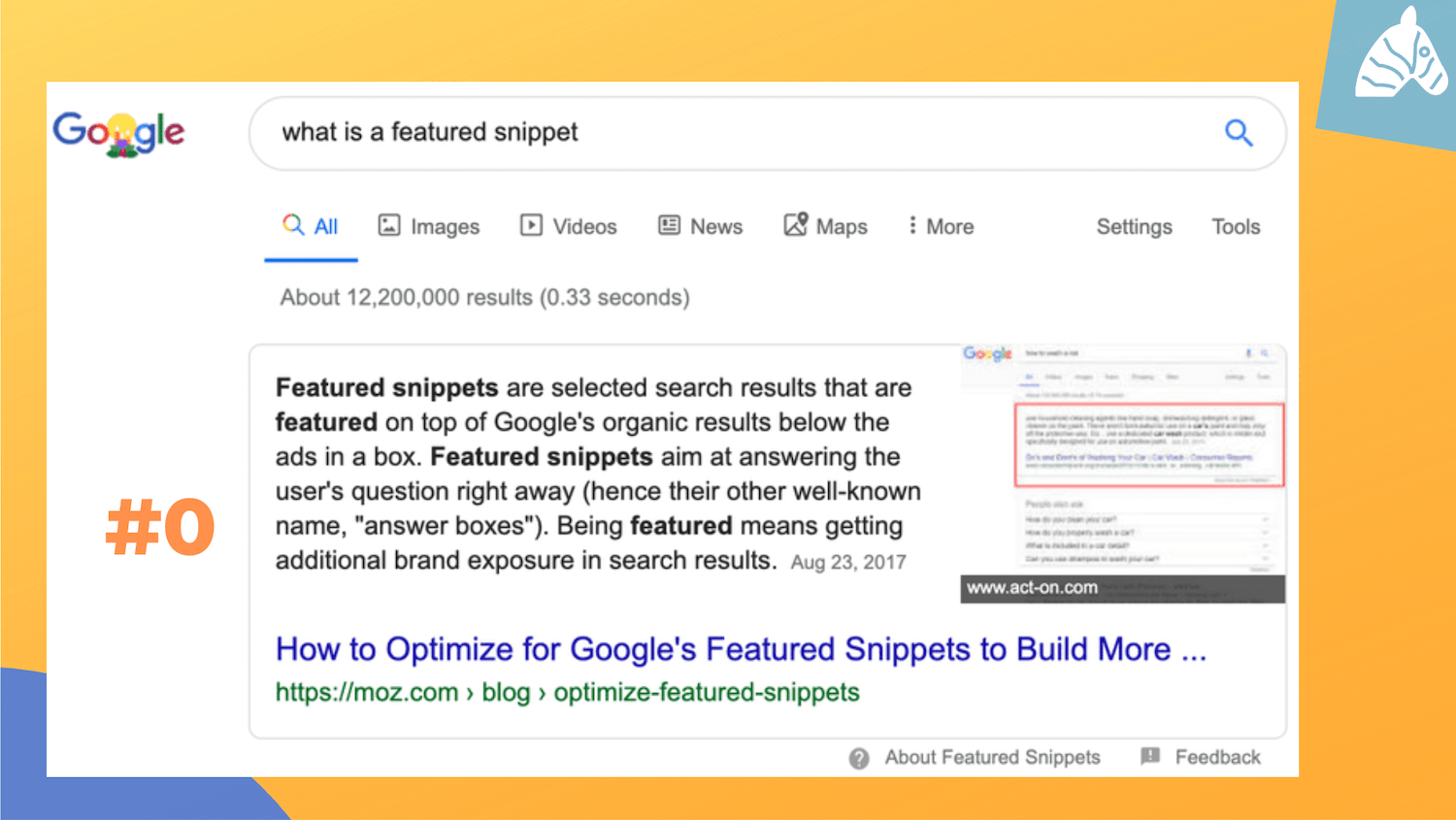
Providing exceptional and valuable content may just be the answer to getting your page and its contents ranking above number one. The result? A whole lot more organic traffic from search engines.
Featured snippets come in a variety of shapes, sizes and formats. Google announced features snippets’ purpose as “to enhance and draw user attention on the results page”. First created as “answer boxes” in 2014, featured snippets fall directly in line with Google’s main goal of serving up the best possible content for users.
The snippets are pieces of information that will directly answer the query being searched. Googles’ clever algorithm can decipher which information will answer the query best from their index and display it at the top of the search bar.
Main types of Featured Snippets
1. Lists
Google displays list snippets when the query implies the searcher is looking for the correct steps to execute a specific task, or an itemised list.
Most commonly used for recipe directions, how-to lists and numbered lists, Google may also format the headings of a list post into bullets to show a compressed and concise version of the content.
Optimising a page for featured list snippets involves including a brief overview of the steps in the beginning of your content, in a list format. This way Google will read and interpret the excerpt as being an answer to a question or query in the form of a list.
2. Paragraphs
Paragraph featured snippets are the most common and will often serve to provide searchers with a direct answer to their question or query. Often the paragraph is matched with a related image.
Paragraph snippets are taken straight from the source and Google will format a small section to best answer the query.
The best way to have your content featured in a paragraph snippet is to include the keywords in phrases such as:
- How to do/get…
- Who is…
- Why is…
- What is…
- When did…
3. Tables
Google will display a table snippet for readability of structured data. The exact table isn’t necessarily taken from the content, instead Google will re-format the data to make it easier to read.
Multifaceted Featured Snippets
In February of 2018, Google announced a new update to featured snippets where under a featured snippet, there is an included section for “people also ask”.
The search engine algorithm creates multifaceted featured snippets based on the assumed search intent. The search engine pages deliver a few featured snippets and the original search query is rewritten as the question. Here’s how a multifaceted featured snippet shows in Google:
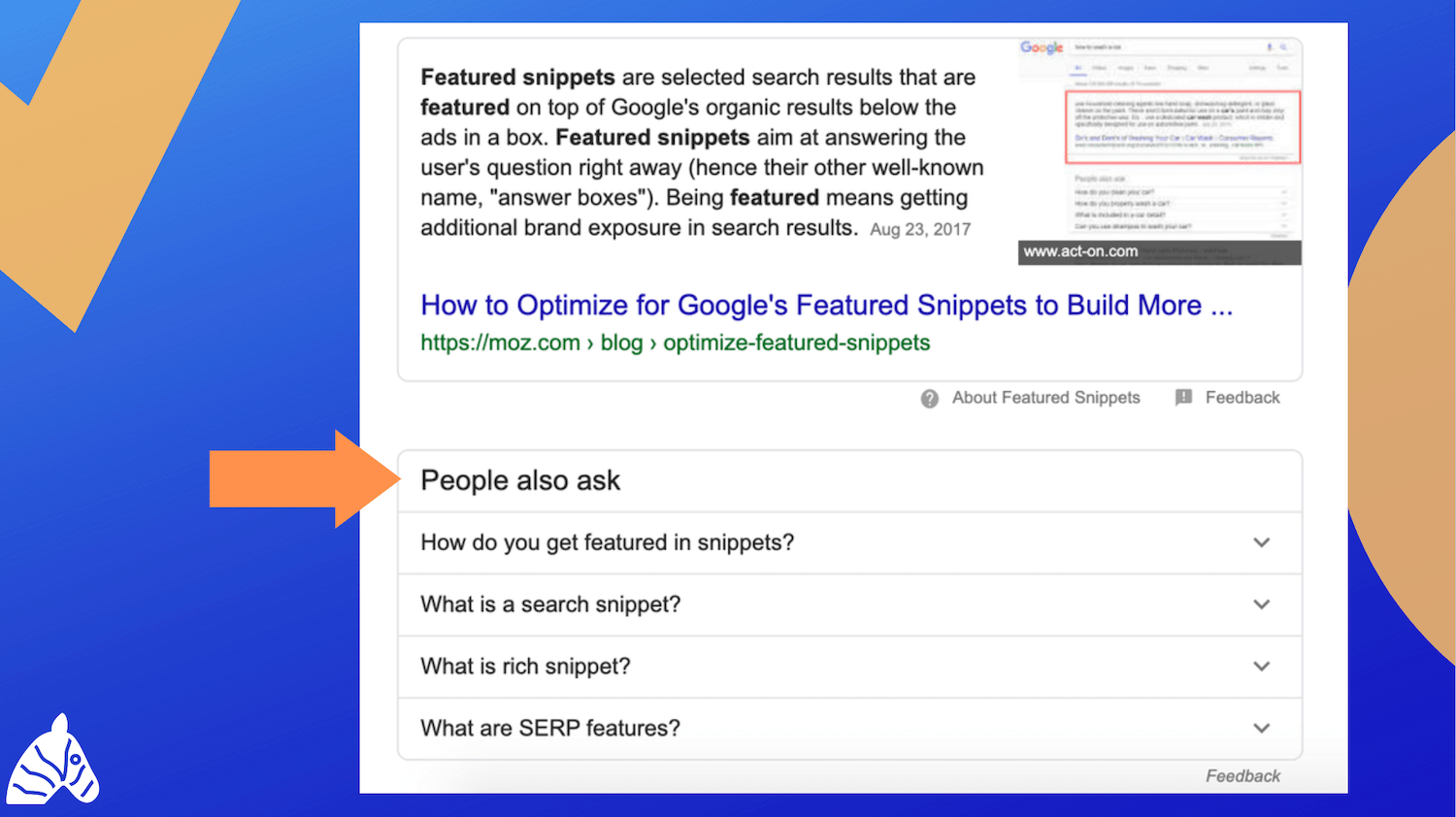
Multifaceted snippets provide searchers with related queries, questions and answers to their original search. This update has been a great way to narrow down search results that are search specific to each query, rather than presenting scattered information that can often be too broad. Depending on the query or question being asked, Google will return with the most specific and accurate answer it can find.
The multifaceted featured snippet has been developed to serve the most specific results for each query. This will only continue to be enhanced in the future as Google continues on their journey to provide the best possible user experience.
Why You Should Focus on Featured Snippets
Considering Google’s featured snippets are placed upon valuable ranking real estate at the top of the SERP, they ensue more impressions, clicks, and traffic. This alone should have you focusing efforts on optimising for featured snippets.
With competition for page one rankings and search engine visibility at an all-time high, snippets provide great opportunity for businesses with great content to compete organically for the top spots.
According to research conducted by Ahrefs, Google provides featured snippets for 12.3% of search queries. That means there is opportunity to provide valuable content above position #1 for 12.3% of all search queries. Websites holding positions in featured snippets will benefit from higher click through rates and organic traffic.
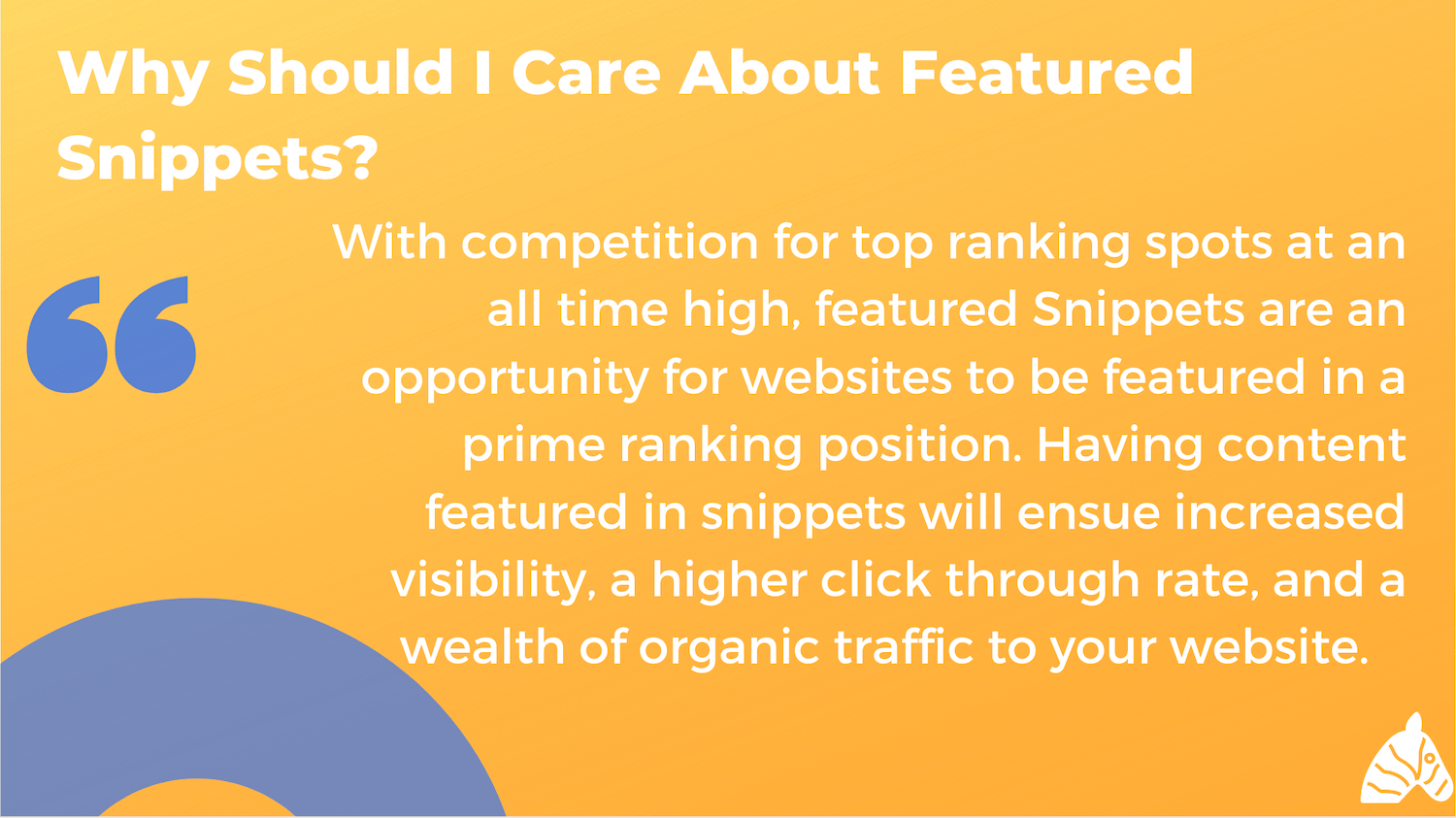
From a user standpoint, websites who have their content being presented in featured snippets have a higher perceived authority. They are seen as providing the best quality and accurate information for the user’s query.
If your content has been selected to be featured, Google obviously believes it to be the most relevant and useful answer for the given question. Content featured by Google is considered to be most trustworthy by users, and therefore featured snippets help to build trust between a brand and the searchers.
Now that we’ve discussed the benefits featured snippets can bring, let’s dive into how we can get content featured by Google.
How You Can Optimise for Featured Snippets
There are a couple of different ways you can optimise content in order to increase the chances of it being noticed and selected by Google. However, it’s important to understand that the premise for featured snippets is to serve users with the most relevant and helpful information; if you want your content to be featured, it needs to provide the best answer to the query.
If your content is well-written and provides the right answer to the search queries, it has a much better chance of being featured. For competitive search terms, here are a couple of proven methods to optimise for search featured snippets:
1. Long-Tail Keywords
One of the main ways to secure a featured snippet is to target long-tail keywords. Long tail keywords are search terms or phrases that are longer than 3 words. Often highly specific in their intent, long-tail keywords are an opportunity to narrow down the focus of the search results.
Long-tail keywords are a great place to start with optimising for featured intent as they are very specific to a query or question. Often lower volume and lower in competition, targeting long-tail keywords can get your content featured on highly focused search queries that are relevant to your website.
In order to target the right long-tail keywords for snippets, you’ll need to begin with some keyword research. Keyword research is crucial to understanding where your content can be featured in a snippet.
There are a number of free SEO keyword research tools available to assist you with long-tail keyword research. Keep your research relevant to your website, the content, and your customers.
Given the structural nature of featured snippet results, focusing on question keywords for your research is the key to finding snippet opportunity. For example, when conducting your research, looking for long-tail keywords that contain question words like “how”, “why” or “what” will allow you to provide the direct answer to the question in your content.
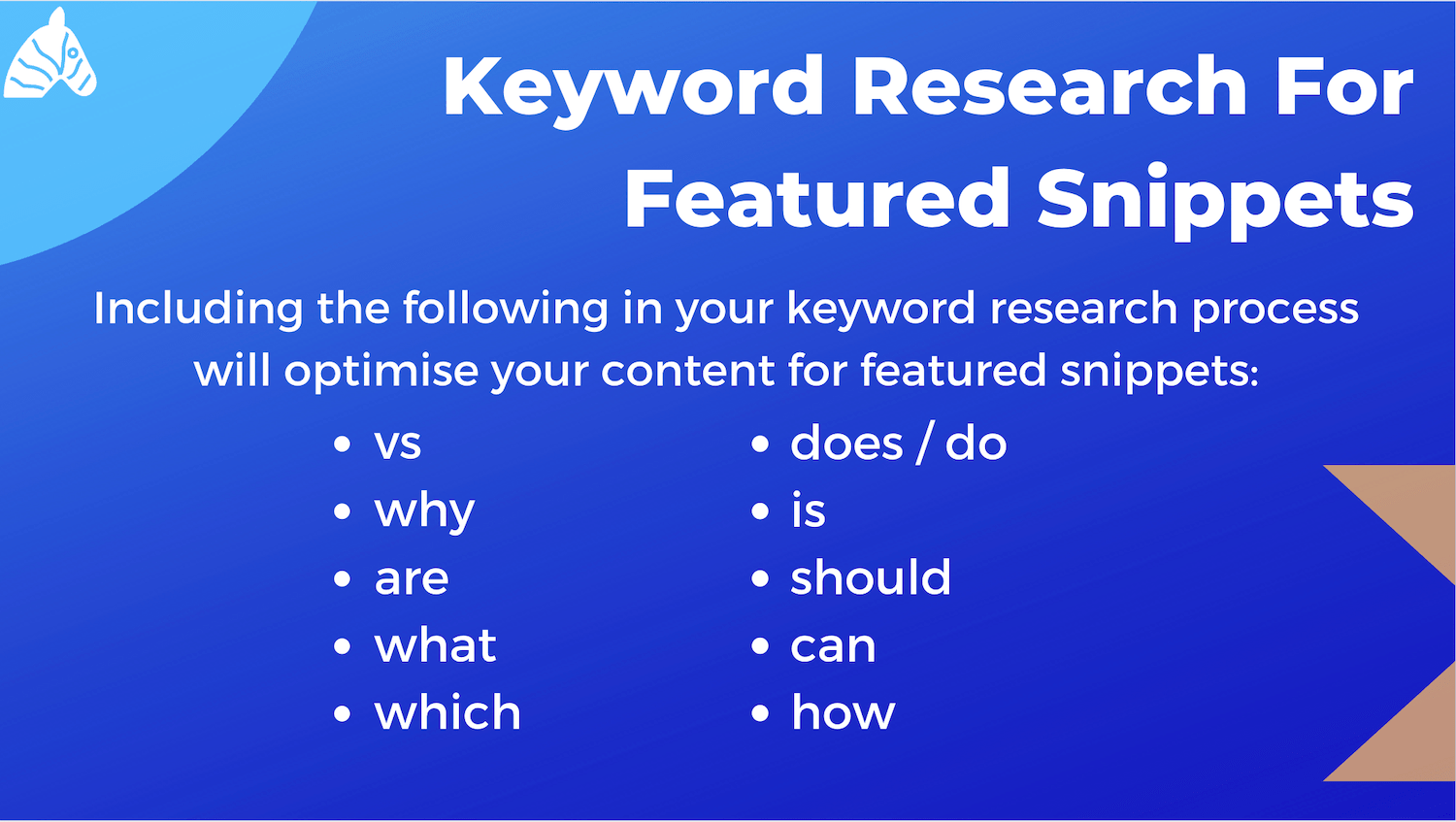
Once you’ve decided on your target long-tail keywords or phrases, it’s time to put them to work in your content. Ideally, you’d like to be able to place the keywords in the following places:
- H1, H2
- The first half of the meta title
- Within structured content
- Incorporated into copy
While still maintaining concise, readable and informative content. However, creating user-friendly content takes precedence over the perfect placement of target keywords. Focus on implementing long-tail keywords without over-optimising copy and turning it into jargon.
2. Semantically Related Keywords
Finding keyword semantics and synonyms for your target keywords or phrases will expand your websites search visibility and chances of being recognised for a featured snippet.
Users will use different word combinations and synonyms to ask the same questions. If you want your content to be the snippet that answers these questions, you need to cover all bases by including semantically related keywords.
Increase your chances of being featured by finding related queries and synonyms that you could potentially add to your content. In order to find semantically related keywords, you’ll need to return to your initial keyword research. You can easily find semantically related keywords or phrases with a research tool such as semrush.
To optimise for intent, you’ll need to be sure that one article answers multiple related questions. There’s no need to create multiple articles for related keywords when one well-written piece can answer many of the related questions in a cohesive manner. Incorporating related keywords into your content will reinforce the question it is answering.
Conclusion
Google is providing an unprecedent opportunity for businesses to get ahead of their competition and gain greater amounts of traffic and visibility with featured snippets.
This is a win-win situation for everyone as it allows websites to rank higher than ever before, for Google to serve up the most valuable and insightful knowledge to users, and for users to find direct answers to highly specific questions and queries.
By optimising your content with both long-tail and semantically related keywords, you can open the door to a wealth of question-and-answer based content to be featured on search.
Want more traffic and greater authority by getting featured in Google’s featured snippets? Our team of Sydney SEO experts can help your business reach more potential customers and establish your business as an industry leader. Get in touch today to find out how your business can grow with our SEO Services.


